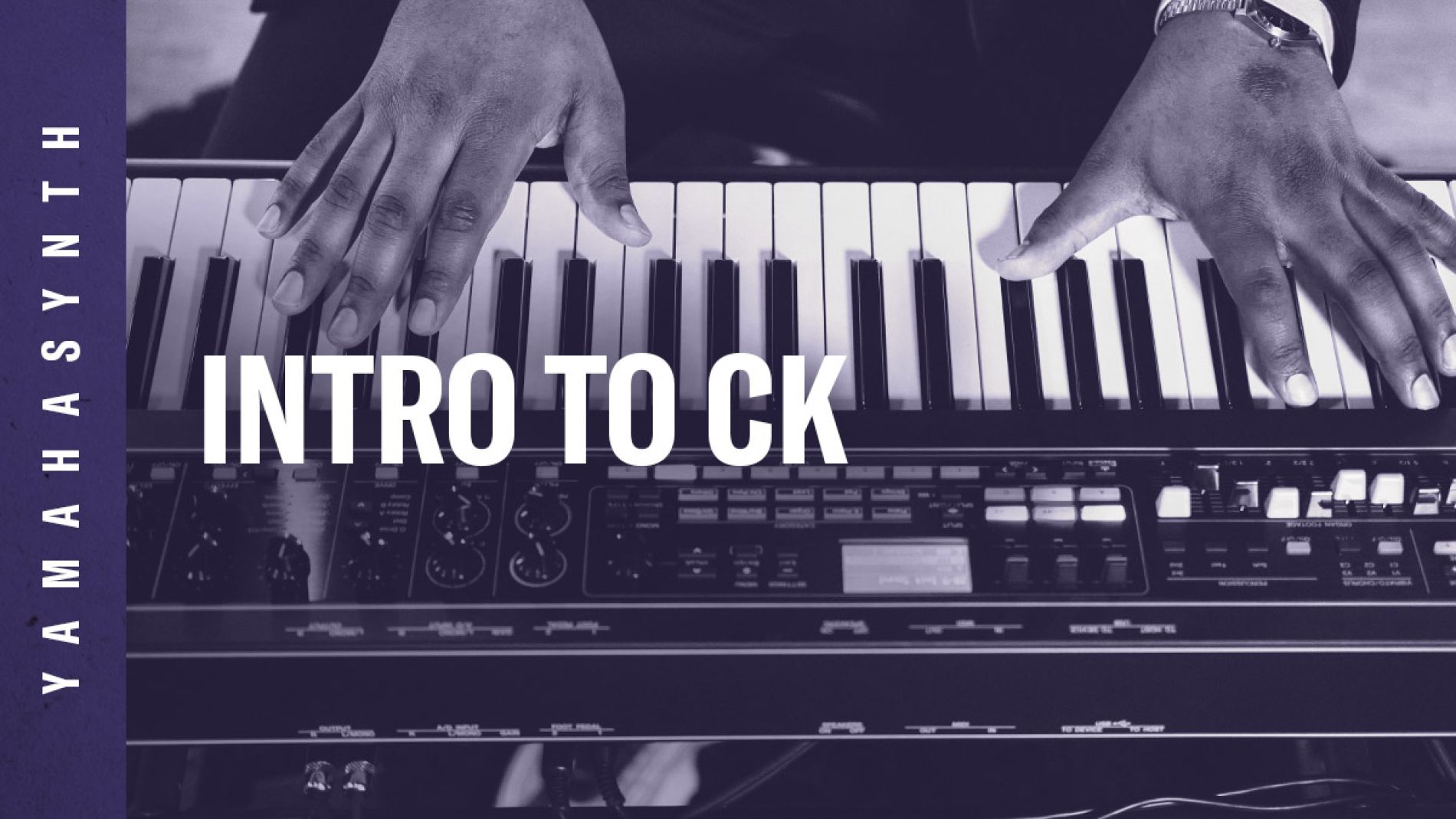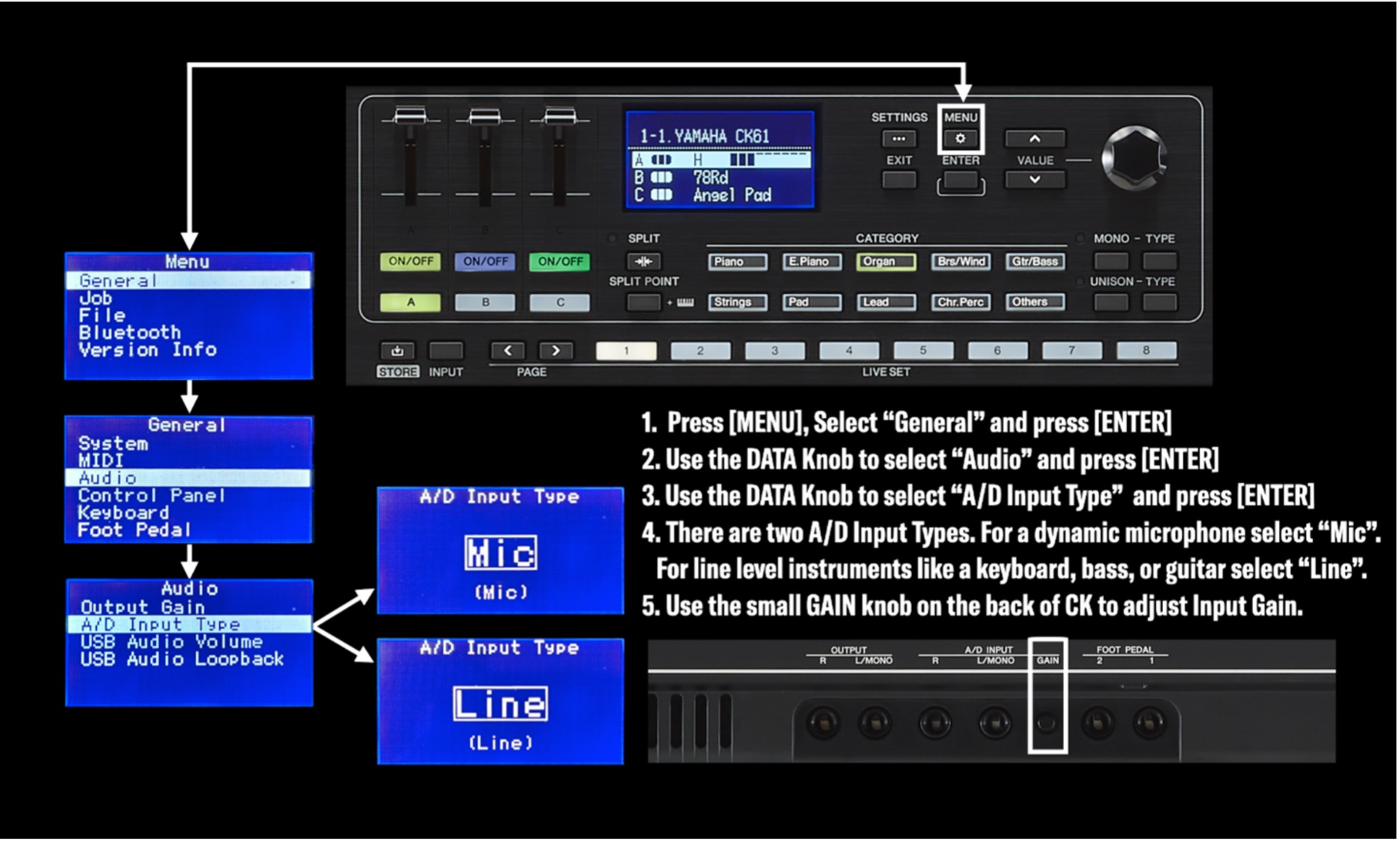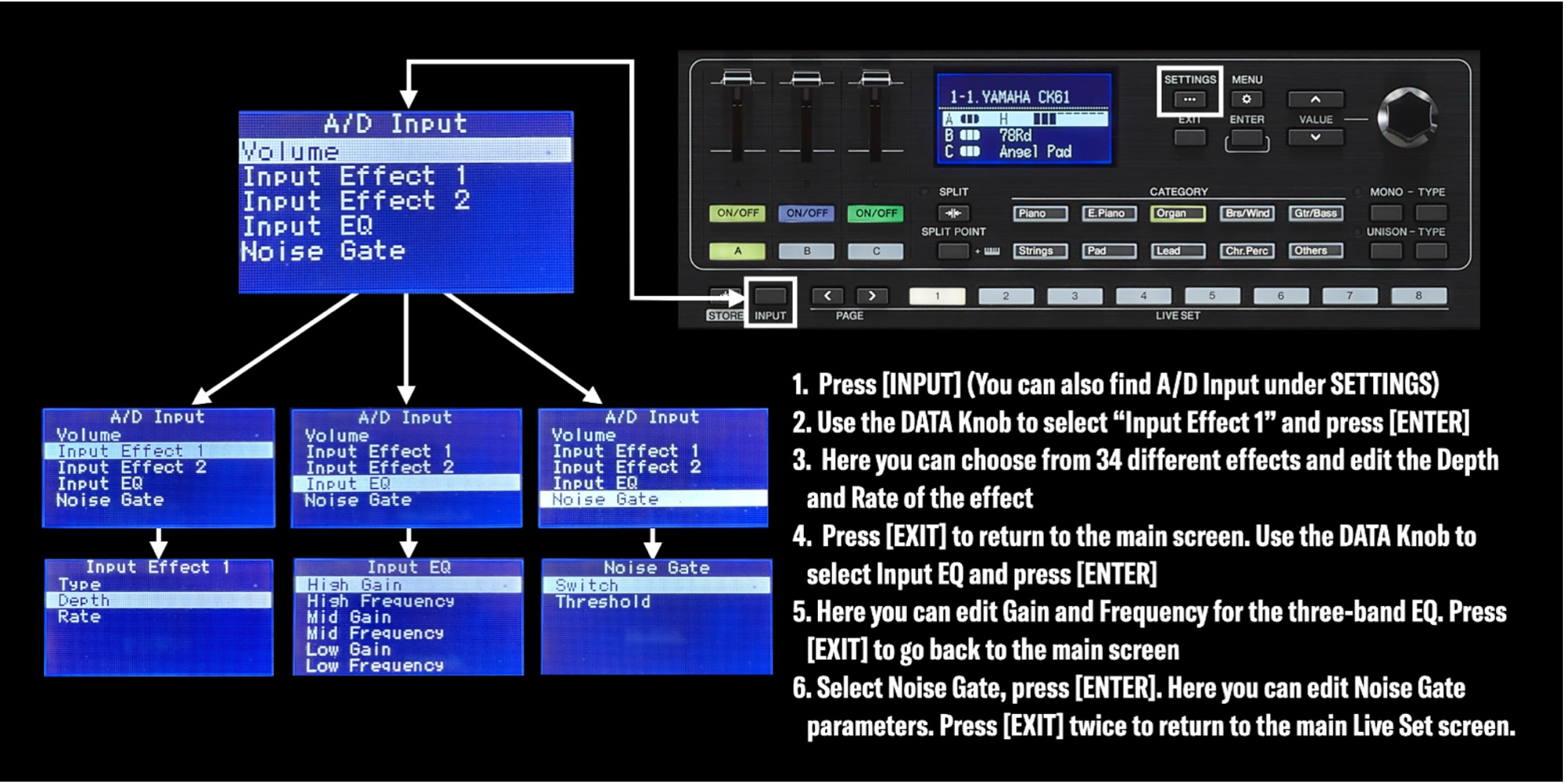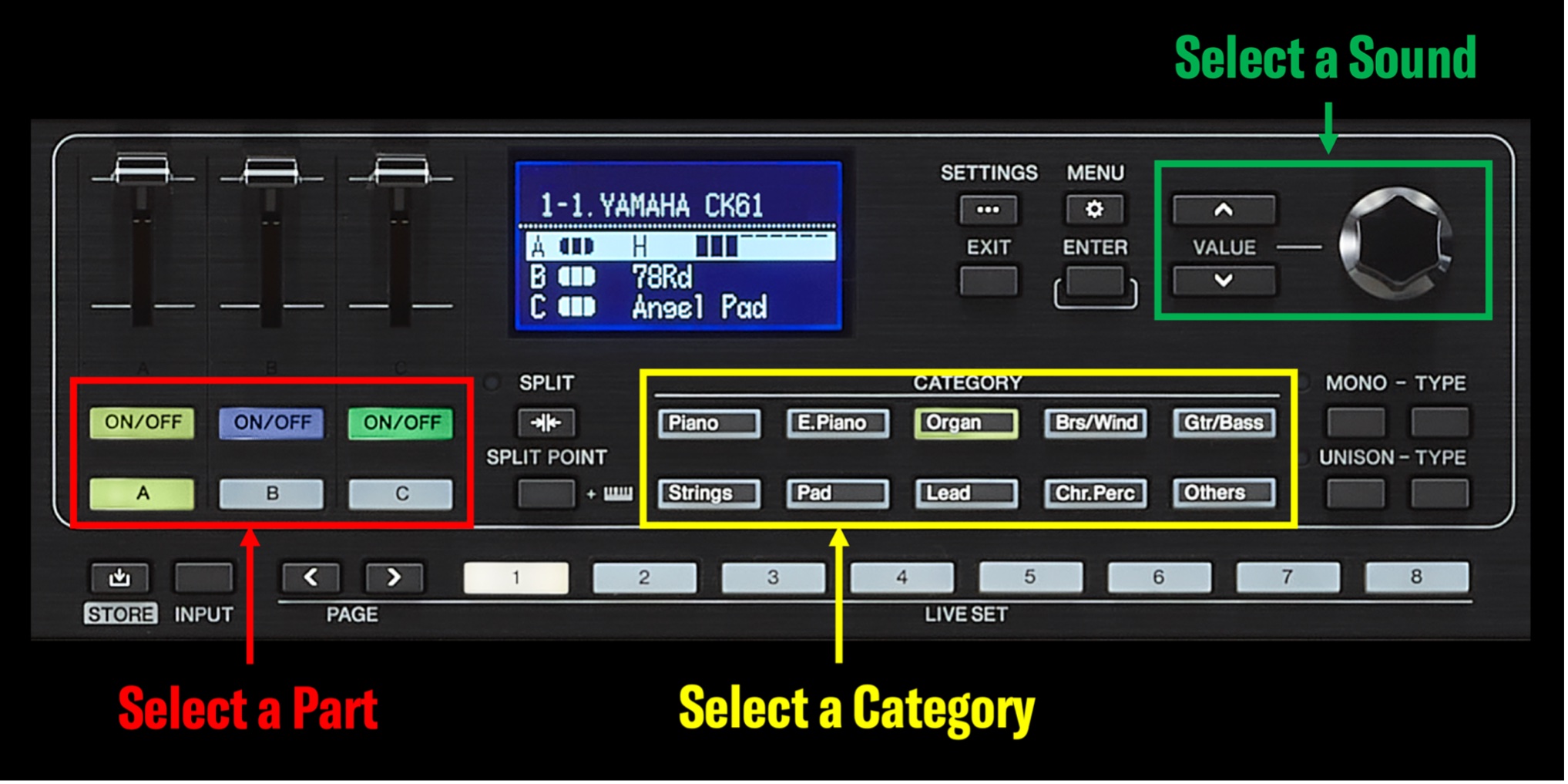Intro to CK

INTRO
Thanks for purchasing [CK]. This guide is designed to help get you up and making music ASAP!
WHAT’S IN THE BOX?
- Owner’s manual
- PA-150B Power Adapter
QUICK CONNECTIONS
POWER
Connect the supplied PA150B power adaptor to the [AC IN] jack on the instrument’s rear panel. Connect the other end to an AC outlet. Make sure your instrument the voltage requirement for the country or region in which it is being used.
AUDIO
Internal Speakers: CK has built-in stereo speakers making it easy to play the instrument anywhere. You can optimize the speaker sound for playing the keyboard on a stand or table. To configure the speakers, press [MENU]/General/System/Speaker/Speaker EQ. See below:

There are two settings to choose from:
- Normal: This EQ should be used when the CK is on a keyboard stand
- Table: This EQ should be used when the CK is set on a table
When using the internal speakers make sure you set this properly. The difference in sound is dramatic!
THE CK BACK PANEL
Let’s look the CK back panel.

Connecting External Speakers: The main stereo output is located all the way to the left. This is where you connect to external speakers. the best sound quality, we recommend connecting your instrument to a mixer, audio interface or powered speakers in stereo. Many of the instrument sounds are sampled/programmed in stereo and many of the effects are stereo effects as well. These elements sound acceptable in MONO but are best if amplified in STEREO. We don’t recommend connecting to guitar or keyboard amps unless you’re going for a special effect.
If you’d like to turn the internal speakers off there is a handy Speaker On/Off switch just to he left of the MIDI In/Out.
Set the appropriate input gain on your mixer, audio interface or powered speakers. Then adjust the output level to the optimal level for your playing and listening environment. For more information on input gain and gain staging go here.
The A/D Input: CK features a stereo A/D Input that can be set for a mic or line input. You can route the external signal through two discreet effect processors, a three band EQ and a noise gate. This makes it easy to connect an instrumentalist or vocalist directly to the CK A/D input, add suitable effects and monitor it all directly from the CK onboard speakers. There are two settings you’ll need to know about when using the A/D input. First, set up for mic or line level input as in the graphic below:

Once you set up the A/D input type you can set the volume, effects, EQ and noise gate. Here’s how:

USB/MIDI
Refer to the back panel graphic above. You’ll see all the way to the right are two USB connections, TO HOST and TO DEVICE:
- TO HOST: The TO HOST connection is for connecting the CK to a computer or mobile device using a USB cable. The USB TO HOST connector carries both MIDI and audio information making your instrument a MIDI and audio interface.
- TO DEVICE: The TO DEVICE USB connection is for connecting USB memory device, like a USB flash drive, so that the internal content created in the CK can be store on an external memory device.
Check the “Connecting CK” article for more information.
ADJUST TOUCH RESPONSE
For best results, do this after setting optimizing your gain staging above.
The scale of velocity (how hard you hit the keys) varies greatly from player to player. Adjustment to the level of velocity sensitivity on the YC keyboard can be adjusted to your playing preference. Here’s how to adjust velocity sensitivity:
- Press the [MENU] button.
- Select “Keyboard” using the DATA Knob or [VALUE] up/down buttons and press [ENTER]
- Select “Touch Curve” and press [ENTER]
Choose between the following settings:
- Normal: A linear curve response producing a one-to-one correspondence between velocity sound change. This is the factory default setting.
- Soft: Increased response from velocity. Use this setting if you have a lighter touch.
- Hard: Decreased response from velocity. User this setting if you have a heavier touch.
- Wide: This works like a velocity expander and compressor, producing lower velocities when playing lighter and higher velocities when playing heavier.
- Fixed: The same velocity is produced regardless of how hard or soft you play. You can set the fixed velocity (1-127). The factor default setting is 64.
EXPLORING SOUNDS
- Select the first Live Set Sound, “CFX Grand”. Part A is the only active part, and the Voice in Part A is “CFX Stereo”, a stereo concert grand piano. Part A is selected
- Select a Category from the 10 options in the CATEGORY section.
- Use the [VALUE] up/down or DATA knob to select sounds within the selected category. See below:

Keep Reading
© 2025 Yamaha Corporation of America and Yamaha Corporation. All rights reserved. Terms of Use | Privacy Policy | Contact Us